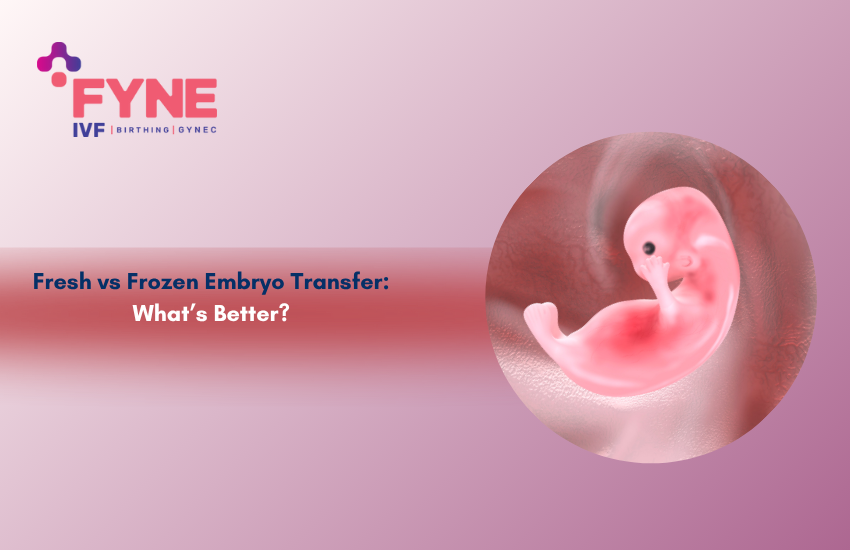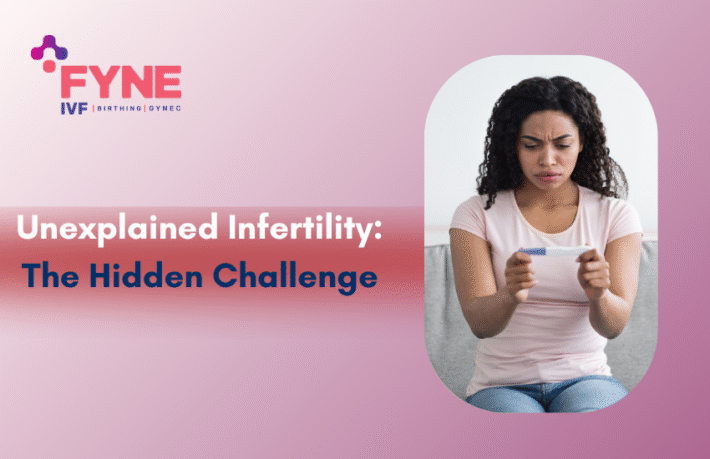Fresh vs. Frozen Embryo Transfers: Which One is Better for IVF Success?

Choosing IVF as a path to parenthood can be one of the most significant decisions you make, and with it comes many questions about the best approach to treatment. Among these decisions, one of the most important is whether to go for a fresh or frozen embryo transfer. Each option has its benefits and considerations, and understanding the differences can feel overwhelming.
The decision you make will depend on your unique circumstances, whether you’re looking for a faster route to parenthood or more time for your body to prepare. This blog aims to guide you through both options, helping you feel more confident as you navigate your IVF journey.
What is a Fresh Embryo Transfer?
A fresh embryo transfer occurs during the same IVF cycle as the egg retrieval and fertilisation. After fertilising the eggs in the lab, the embryos are transferred directly into the uterus.
When it’s Typically Done
Fresh embryo transfers are usually performed 3 to 5 days after fertilisation when the embryos have developed to the blastocyst stage.
Pros:
- Faster IVF cycle: You don’t have to wait for another cycle, which can be appealing for those who want a quicker route to pregnancy.
- No freezing costs: There are no additional expenses for freezing or storing embryos.
Cons:
- Hormonal stimulation effects: The medications used for egg retrieval and fertilisation may affect the uterus, potentially making it less receptive to implantation.
What is a Frozen Embryo Transfer (FET)?
A frozen embryo transfer involves thawing embryos that were frozen during an earlier IVF cycle and transferring them into the uterus in a subsequent cycle. This allows for more time to prepare both the body and the embryos.
Process of Thawing and Transfer
Embryos are carefully thawed before being transferred into the uterus. This process typically happens after the uterus is prepared, often using hormone treatments to optimise the chances of implantation.
Pros:
- More time for the body to recover: The body has time to return to its natural state between cycles, which can improve the chances of a successful pregnancy.
- Better endometrial preparation: Without the hormonal effects from the IVF cycle, the uterus may be more receptive to the embryo.
Cons:
- Additional waiting period: Since the embryos are stored and thawed, there’s an extra step involved before transfer.
- Cost of freezing and storage: There are additional costs for freezing and storing embryos for later use.
Fresh vs. Frozen: IVF Success Rates
Studies have shown that frozen embryo transfers (FET) have higher live birth rates than fresh transfers, i.e. FET: 28.62% vs. Fresh: 19.23% (study of 2,872 women). However, the choice between fresh and frozen depends on several factors such as age, embryo quality, and uterine health.
Factors Influencing Success:
- Age: Younger women typically experience higher success rates with both types of transfers.
- Embryo Quality: High-quality embryos are more likely to lead to successful pregnancies, regardless of whether they are fresh or frozen.
- Uterine Health: The ability of the uterus to accept an embryo is crucial for implantation. FET allows more time to prepare the uterus and ensure it’s in the best condition for implantation.
Which Is Better for You?
The decision between a fresh or frozen embryo transfer depends on several factors unique to each person. Consider the following:
- PCOS or Hormonal Imbalances: If you have PCOS or irregular hormone levels, a frozen embryo transfer may provide better control over your hormone environment.
- Uterine Lining Issues: If your uterus hasn’t had enough time to develop or is not in the optimal condition for implantation, FET could allow for better preparation.
- Emotional & Financial Considerations: Fresh transfers may seem more convenient and cost-effective, but FET might offer better long-term success. Be sure to consider both the emotional and financial implications of your choice.
Expert Advice
Consulting a fertility expert can provide insight into your unique situation, helping you determine which option is best for you. Your doctor will consider your age, health conditions, hormonal balance, and embryo quality to help guide your decision. Personalised IVF treatment plans, whether for a fresh or frozen embryo transfer, are key to maximising your chances of success.
Summing It Up: Finding the Right Path to Parenthood
Both fresh and frozen embryo transfers offer distinct advantages, and the best choice depends on various factors like hormonal health, age, and embryo quality. While FET has become increasingly popular due to its higher success rates and improved conditions for embryo implantation, fresh embryo transfer can also be an effective option for women who prefer a quicker path to pregnancy.
If you’re considering IVF or want more information about fresh vs. frozen embryo transfers, reach out to FYNE IVF today for a consultation. Our expert team will guide you through the decision-making process and help you choose the best option tailored to your fertility needs.


